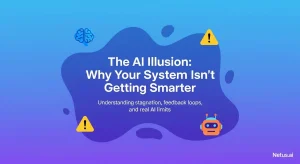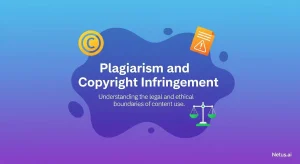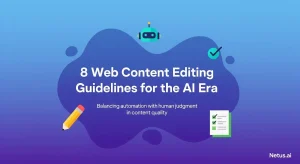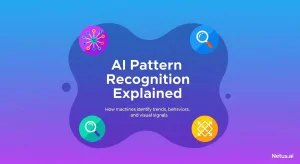Plagiarism Meaning in Urdu: Decoding the Concept
Ashley Merit
Content writer and editor for Netus.AI
Table of Contents
Plagiarism Meaning in Urdu. Plagiarism is a pressing issue that transcends linguistic barriers, prevalent not just in written works but in all forms of artistic expressions. In the context of Urdu, plagiarism occurs when unauthorized content—ranging from text to images, videos, or ideas—is appropriated by someone as their own. While deliberate plagiarism involves the intentional act of copying without acknowledging the original source, accidental or unintentional plagiarism occurs when someone’s work is reproduced or reused without proper citation, due to lack of knowledge or misunderstanding of citation norms.
The consequences of plagiarism can be far-reaching and impact both creators and consumers alike. Regardless of whether plagiarism is committed intentionally or unknowingly, it undermines the credibility of the plagiarist and devalues the hard work of original creators. To combat this issue, it is crucial to recognize the various forms of plagiarism and adopt strategies to avoid falling into the traps of duplicating content or ideas without proper acknowledgement.
Key Takeaways
- Plagiarism affects various domains, including written content and performing arts, and extends across languages such as Urdu.
- Both intentional and unintentional plagiarism can have serious consequences on a person’s credibility and the value of original works.
- Adopting effective strategies and acknowledging sources can help prevent plagiarism and protect the integrity of creative endeavors.
About the Plagiarism Meaning in Urdu
The beauty of the Urdu language is undeniable, with captivating creations such as shayeris and poems that demonstrate its charm. Despite this allure, instances of plagiarism in Urdu are not uncommon.
In Urdu, plagiarism translates to “Mazmoon Ki Chori” and refers to the unauthorized use of content in both Urdu and Roman Urdu. Advancements in technology have made accessing the Urdu language more manageable, particularly with online English to Urdu dictionaries. These resources facilitate checking the meaning of Urdu words in English and vice versa, enabling writers to enhance their content.
Often, people need to translate Urdu words or phrases for use in their writing. Unfortunately, this has led to an increased temptation to copy readily available content. As communication remains the key to success, individuals should strive to better understand multiple languages.
However, understanding a foreign language requires more than copying others’ work. Content creators should remember the importance of having a strong grasp of the language to ensure originality in their writing.
By ensuring an understanding of the Urdu language and using resources such as dictionaries wisely, individuals can create engaging and authentic content that celebrates the richness of Urdu while avoiding the pitfalls of plagiarism.
Unforeseen Effects of Plagiarism
Regardless of the form it takes, plagiarism is considered unethical because it duplicates another person’s hard work, effort, and time. Plagiarism is treated with severity in every domain. Here are some of the unknown consequences of plagiarism:
- Legal consequences: To protect their original work, content creators and websites use copyright laws. When plagiarism is reported, those who are found guilty may face legal charges, including financial penalties.
- Search engine penalties: Websites with duplicated content are penalized by search engines. Identical content on different web pages is easy to detect. Search engines can pinpoint the original pages and direct users there by adjusting the search results.
- Academic consequences: In educational institutions, students often seek help and use existing content for their projects. If a student’s work is found to be plagiarized, the institution may revoke the submitted papers or projects, leading to a loss of academic grades. As a result, it’s crucial to avoid plagiarism to minimize the risk of penalties.
- Impact on user-generated content: With the rise of social media, many people have turned to content creation for self-expression and gaining popularity. Brands often use such popular content to promote their products and services. However, copying or duplicating this content can tarnish the content creator’s reputation.
- Hindered website rankings: Copied content can negatively affect a website’s ranking, despite the effective use of SEO techniques. Duplicated content is detrimental to a site’s reputation.
In conclusion, it is essential to recognize and avoid plagiarism to prevent these unforeseen consequences and maintain the integrity and quality of original content.
Useful Strategies for Preventing Plagiarism
Understanding the problem of plagiarism is essential, regardless of the language in which the writing is done. To ensure that your content is original and free from similarities with other works, it is crucial to implement specific strategies and techniques. In this section, we will discuss these strategies that will help keep your content unique and avoid plagiarism.
Acknowledgments and Proper Citations
Acknowledging the sources used in your piece of writing is a vital aspect of avoiding plagiarism. Familiarizing yourself with citation styles, such as APA or MLA, will enable you to credit external sources by using quotations and parenthetical references. Including a bibliography or reference list is another way to cite the sources used and builds credibility for your work.
Fact Gathering
Having extensive knowledge about the topic you are writing about can help you create original content. Researching the subject matter and understanding the current competition will provide you with valuable insights. This knowledge will enhance your writing skills and equip you with the confidence to write without relying on other sources.
Selecting Appropriate Sources
Be cautious when selecting the sources from which you will gather information. Using copyrighted material may result in copyright infringement and can be considered an act of plagiarism. Avoid using protected content by choosing sources that are reliable and credible.
Emphasize Originality Over Summarizing and Paraphrasing
Contrary to popular belief, summarizing and paraphrasing can also contribute to plagiarism. One common mistake writers make is making minimal changes to the original content to maintain their website and SEO rankings. Plagiarism checkers can easily detect such alterations in the content.
To ensure originality, focus on crafting content that showcases your knowledge and creativity. If summarizing or paraphrasing is necessary, use synonyms without altering the meaning of the original text, and provide proper citations.
By implementing these practical strategies, you will be able to prevent plagiarism in your written work, convey a confident and knowledgeable tone, and maintain the quality and originality of your content.
Frequently Asked Questions
A Simple Explanation of Plagiarism with Examples
Plagiarism can be explained as the act of using someone else’s words, ideas, or creations without giving proper credit. For example, copying a paragraph from a book or article and presenting it as your own work would be considered plagiarism.
Consequences of Plagiarism for Students
Students who plagiarize may face several consequences, including:
- A failing grade on the assignment or course
- Academic probation or suspension
- Damage to their reputation and future opportunities
Differences Between Piracy and Plagiarism
Piracy and plagiarism differ in the following ways:
| Piracy | Plagiarism |
|---|---|
| Involves unauthorized copying, | Involves using someone else’s |
| distribution or use of copyrighted | intellectual property without |
| material. | giving proper credit. |
| Affects industries like movies, | Affects academia, journalism and |
| music, and software. | other creative fields. |
Clear Definition of Plagiarism
Plagiarism is the act of using another person’s words, ideas, or creations without giving proper credit, thus presenting them as one’s own work.
Correct Pronunciation of Plagiarism
Plagiarism is pronounced as “play-juh-riz-uhm.”
Various Forms of Plagiarism
Some common forms of plagiarism include:
- Direct plagiarism: Copying and pasting text without attribution
- Mosaic plagiarism: Combining various sources without proper citation
- Self-plagiarism: Reusing one’s own previous work without disclosure
- Paraphrasing plagiarism: Rewriting someone else’s content without citing the source
It is essential to be aware of these forms of plagiarism and avoid them in any academic or professional setting.

The shortcomings of content generated by AI | NetusAI
Discover why fast, high-volume AI content often fails to deliver real results. Learn about the crucial missing feedback loop and how implementing performance tracking can transform your AI content strategy.

The illusion of AI: Your system's intelligence gap | NetusAI
Stop wasting marketing spend! Most AI tools don’t learn from results, causing content stagnation and low engagement. Discover why your generative AI isn’t getting smarter and what system actually learns and optimizes content.

Plagiarism and copyright infringement | NetusAI
Learn the distinct differences between plagiarism and copyright infringement. Understand the ethical and legal implications and get practical strategies for avoiding both academic and creative work with NetusAI.

Tips and strategies for mobile content marketing | NetusAI
Optimized for mobile-first indexing, learn 5 essential strategies to capture attention, enhance engagement and drive leads and sales with your mobile content marketing.

Web content editing guidelines for the AI era | NetusAI
Review web content editing guidelines for the AI era. Learn how to edit AI-generated content, ensure authenticity and optimize for SEO and readability.

Explaining AI pattern recognition | NetusAI
AI pattern recognition enables machines to identify trends for diverse applications, from detecting plagiarism to fraud. Discover its processes, models and real-world benefits.
